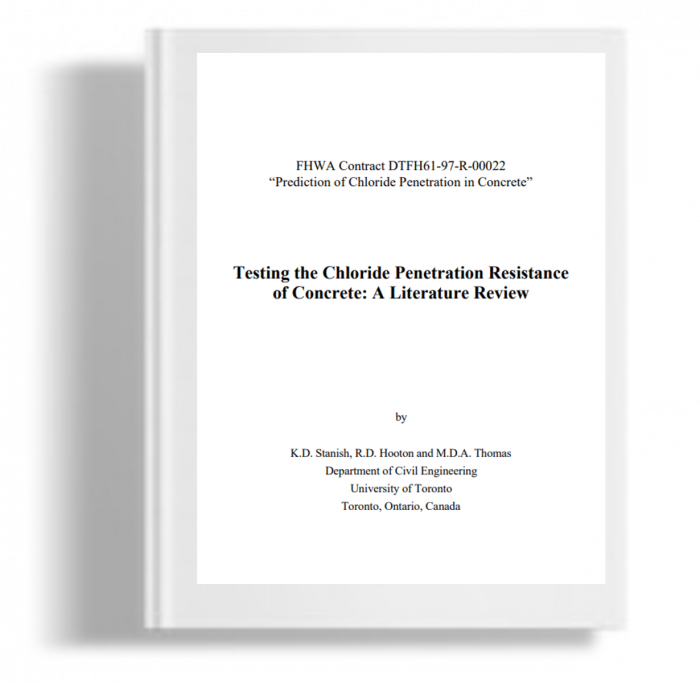Kami menggunakan cookies untuk membuat pengalaman Anda lebih baik. Untuk mematuhi petunjuk e-Pribadi yang baru, kami perlu meminta persetujuan Anda untuk menyetel cookies. Pelajari lebih lanjut .
Testing the cloride penetration resistance of concrete : A literature review
Reinforced concrete structures are exposed to harsh environments yet are often expected to last with little or no repair or maintenance for long periods of time (often 100 years or more). To do this, a durable structure needs to be produced. For reinforced concrete bridges, one of the major forms of environmental attack is chloride ingress, which leads to corrosion of the reinforcing steel and a subsequent reduction in the strength, serviceability, and aesthetics of the structure. This may lead to early repair or premature replacement of the structure. A common method of preventing such deterioration is to prevent chlorides from penetrating the structure to the level of the reinforcing steel bar by using relatively impenetrable concrete. The ability of chloride ions to penetrate the concrete must then be known for design as well as quality control purposes. The penetration of the concrete by chloride ions, however, is a slow process. It cannot be determined directly in a time frame that would be useful as a quality control measure. Therefore, in order to assess chloride penetration, a test method that accelerates the process is needed, to allow the determination of diffusion values in a reasonable time.
Reinforced concrete structures are exposed to harsh environments yet are often expected to last with little or no repair or maintenance for long periods of time (often 100 years or more). To do this, a durable structure needs to be produced. For reinforced concrete bridges, one of the major forms of environmental attack is chloride ingress, which leads to corrosion of the reinforcing steel and a subsequent reduction in the strength, serviceability, and aesthetics of the structure. This may lead to early repair or premature replacement of the structure. A common method of preventing such deterioration is to prevent chlorides from penetrating the structure to the level of the reinforcing steel bar by using relatively impenetrable concrete. The ability of chloride ions to penetrate the concrete must then be known for design as well as quality control purposes. The penetration of the concrete by chloride ions, however, is a slow process. It cannot be determined directly in a time frame that would be useful as a quality control measure. Therefore, in order to assess chloride penetration, a test method that accelerates the process is needed, to allow the determination of diffusion values in a reasonable time.

